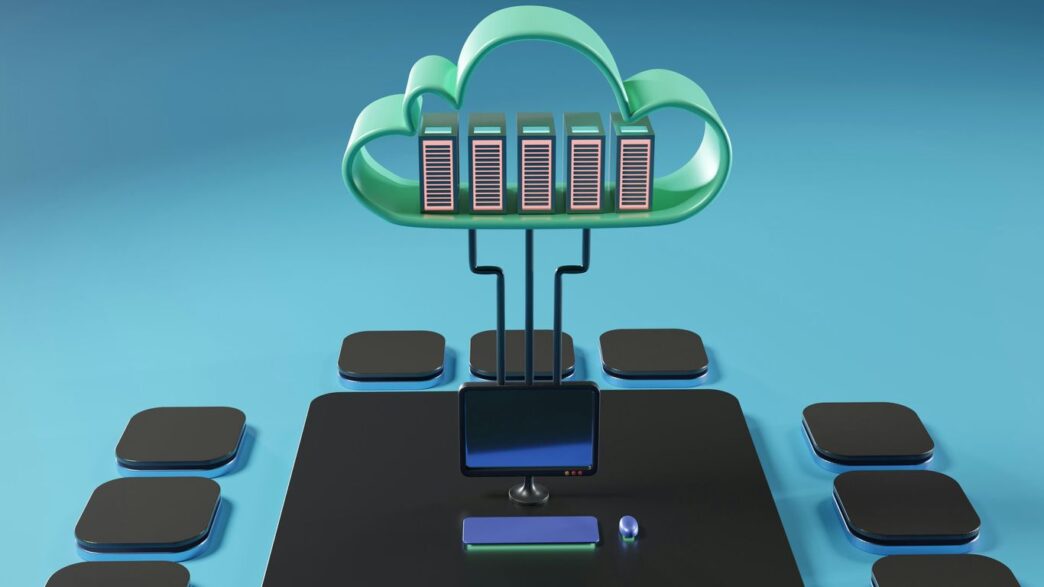Defining Cloud Service Delivery Models

What Sets Cloud Service Delivery Models Apart
Cloud service delivery models are basically ways for businesses and individuals to use computing resources without buying and maintaining their own hardware and software. The biggest thing that separates these models is who manages what—meaning how much control you keep versus what the provider takes care of. Each model comes with a different level of responsibility and flexibility. Here’s how each major model stands out:
- IaaS: You rent IT infrastructure like servers and storage.
- PaaS: You get a managed environment for developing and deploying applications.
- SaaS: You use complete software applications through your browser or an app, no maintenance needed.
Levels of Abstraction and Control
Every cloud service model offers a different "slice" of the computing stack. The lower you go, the more you control; the higher you go, the more is managed for you. Here’s a neat way to see who does what:
| Layer/Task | IaaS | PaaS | SaaS |
|---|---|---|---|
| Physical servers | ❌ | ❌ | ❌ |
| Virtualization | ❌ | ❌ | ❌ |
| OS maintenance | ✔️ | ❌ | ❌ |
| Application Middleware | ✔️ | ❌ | ❌ |
| App Deployment | ✔️ | ✔️ | ❌ |
| Application use | ✔️ | ✔️ | ✔️ |
- IaaS: You handle the most—installing software, patching OS, tweaking security settings.
- PaaS: Focused on coding and launching your app, most of the environment is ready to go.
- SaaS: Just use the app; the provider handles everything else.
Key Benefits of Adopting Cloud Delivery Models
Opting for cloud service delivery models changes your computing experience in a few clear ways:
- Cost Savings: No need for upfront hardware investments; pay as you go.
- Flexibility: Scale up or down almost instantly as your needs change.
- Speed of Deployment: Services are ready to use much faster; updates and fixes are handled for you in PaaS and SaaS.
- Focus on What Matters: You can spend more time on your project itself, not on buying servers or fixing software bugs.
- Access From Anywhere: As long as you have internet, you can connect and work—from home, office, or pretty much anywhere.
If you’re thinking about which model works best for you or your company, knowing how much control you want versus how much responsibility you want to hand off is the first step. Each model gives you options to match what you need today—and you can always change it up as things grow.
Exploring Infrastructure as a Service (IaaS)
Infrastructure as a Service (IaaS) is like renting the basics for IT—think servers, storage, and network—but instead of owning it or stuffing it into a closet somewhere, you use what you need from a giant provider over the internet. You can turn stuff on or off, scale it up or down, and pay only for what you actually use.
How IaaS Works in Practice
With IaaS, companies don’t have to think about installing hardware or fixing broken fans. Providers keep the physical stuff running while you get the power to create and destroy virtual resources as needed. The main components you manage are:
- Virtual Machines (VMs): Customizable with the OS and apps you want.
- Block and file storage: For data and backups, all on demand.
- Networking: Secure connections, load balancers, and firewalls are built in—configured from a dashboard.
- APIs: Most IaaS comes with handy software hooks so you can automate things, spin up new servers, or connect networks on schedule.
It often looks like this: You log in, pick what you want (CPU, memory, storage), click a button, and a few minutes later, you’re running a server somewhere in a provider’s giant warehouse.
Typical Use Cases for IaaS
IaaS isn’t just for tech giants. Any business that needs to move fast or avoid buying hardware can benefit. Some common situations include:
- Web hosting: Quickly launch websites and scale as traffic spikes.
- Development & Testing: Create disposable environments for trying out new app versions without wrecking production systems.
- Disaster Recovery & Backup: Keep critical data safe and ready to restore if things go sideways at headquarters.
- Big Data Analytics: Process huge datasets without buying specialized gear.
- Virtual Desktop Infrastructure: Let folks work remotely, accessing company desktops over the internet.
Here’s a quick table summarizing more use cases:
| Use Case | Benefit |
|---|---|
| E-commerce hosting | Handles traffic surges during sales |
| Content Delivery (CDN) | Speeds up website/app performance worldwide |
| AI/ML workloads | On-demand computing boosts research capability |
Advantages and Drawbacks of IaaS
There’s a lot to like, but some tradeoffs too. Here’s how it typically shakes out:
Pros:
- Only pay for what you use—no upfront hardware costs.
- Scale up or down fast; useful for seasonal businesses.
- Access to cutting-edge tech (like GPUs or new processors) without needing to buy anything new.
Cons:
- You’re still responsible for the apps, operating systems, and most security above the infrastructure.
- Less control over the deeper layers (can’t see the physical box; provider decides when to upgrade or move stuff).
- If you’re used to on-premises, there’s some learning to do—the tools and processes can be pretty different.
If you have apps that need lots of tweaking or want deep control over the systems, IaaS offers that flexibility. On the other hand, if your team isn’t up for managing servers or patching, it could turn into more of a headache than you expect. Overall, it’s a solid choice for many businesses looking for flexibility and to avoid hardware hassle.
Understanding Platform as a Service (PaaS)
Platform as a Service, or PaaS, can feel a bit mysterious if you’ve never tried spinning up a cloud app yourself. At its heart, PaaS gives teams a ready-made environment for building, running, and managing applications—no hardware to wrangle, no software to install. You log in, write code, and focus on your project, while the provider takes care of the back-end heavy lifting.
PaaS Features and Components
PaaS isn’t just one thing—think of it as a toolkit loaded with what software developers need most:
- Cloud Infrastructure: The basics, like virtual machines, storage, and network, are invisible but always working in the background. Firewalls and backup routines are included so you don’t have to worry about security patches or data loss.
- Application Management Tools: All-in-one platforms let you write, test, and launch your software, sometimes all from a single dashboard. Middleware built-in means connecting your app to other tools or databases won’t make you lose sleep.
- Graphical User Interfaces (GUIs): These dashboards are the main cockpit for developers and DevOps folks. They’re made so anyone on the team can see progress, test something, or roll out a new feature—even if they’re working from a coffee shop on the other side of the world.
Here’s a quick table showing the main components:
| Component | What it Does |
|---|---|
| Infrastructure | VMs, storage, networking, security |
| Dev/Management Tools | Code editors, test suites, middleware |
| GUI | Web dashboards for building and deployment |
Ideal Scenarios for PaaS Adoption
PaaS shines in certain situations, especially when speed or collaboration is key. Here are a few typical reasons teams choose PaaS:
- Web app development: You can develop, test, and launch apps faster because you’re not patching servers late at night.
- API management: If you’re juggling lots of apps and services, PaaS makes connecting them almost painless.
- Microservices: PaaS helps break big projects into smaller, easier-to-manage chunks, each deployable on its own schedule.
- Rapid prototyping: When you want to experiment without breaking the bank, PaaS lets you spin up temporary projects and throw them away if they flop.
Limitations and Considerations with PaaS
PaaS is great, but it’s not perfect. Here are some things you might want to keep in mind before jumping in:
- Less control: You don’t get to tinker with the underlying hardware or operating system, so some tweaks aren’t possible.
- Vendor lock-in: Sometimes it’s hard to move an app built on one platform to another, especially if they use different tech under the hood.
- Performance quirks: If everyone is working on the same platform, you might notice slowdowns when things get crowded.
In summary, PaaS gives teams a turnkey platform for building and managing apps. It’s fast, collaborative, and can save a lot of hassle, though it does come with some trade-offs—especially around customization and long-term flexibility.
Unpacking Software as a Service (SaaS)
Software as a Service, or SaaS, is the cloud model most people interact with every day. Think of the tools you use at work or even at home—like Gmail, Office 365, or even Netflix for entertainment. Instead of buying and installing these programs on individual computers, you just sign up and use them over the internet. The provider keeps everything up-to-date, so you don’t deal with upgrades, bug fixes, or server crashes.
How SaaS Transforms Software Access
SaaS flips the old software model on its head. Traditionally, you needed to buy a license, download the installer, and maintain updates on your own. With SaaS:
- You access apps through your web browser or a thin client (sometimes even a mobile app)
- The provider handles everything: infrastructure, security, and software updates
- Payments are subscription-based, usually monthly or yearly—there’s no huge upfront fee
- You can use the software on almost any device, anywhere with internet
Here’s a quick table comparing traditional software to SaaS:
| Feature | Traditional Software | SaaS |
|---|---|---|
| Installation | Required | None |
| Payment | One-time | Recurring subscription |
| Updates | Manual | Automatic |
| Access | Local device only | Any device, anywhere |
| Maintenance | User | Provider |
Best Use Cases for SaaS Solutions
While not every scenario is a perfect fit, SaaS thrives where you need reliability and quick, widespread access. Best uses include:
- Team collaboration tools like Slack or Trello
- Customer relationship management (CRM) platforms, for example, Salesforce
- Email and productivity suites (like Google Workspace)
- E-commerce platforms such as Shopify
- File sharing and storage, e.g., Dropbox
- HR and enterprise resource planning (ERP) systems
Common Challenges with SaaS
Though SaaS is easy and convenient, it’s not without its downsides. Here are a few things to keep in mind:
- Customization Limits: Most SaaS apps don’t let you modify features much. What you see is usually what you get.
- Security Concerns: You’re trusting a third party with your data, which can be nerve-wracking for sensitive information.
- Integration Headaches: Not all SaaS tools play nice with other platforms you might be using.
- Loss of Control: You’re essentially renting software—if the provider changes something or goes out of business, you’re stuck.
- Subscription Fatigue: Costs can add up if you rely on many different SaaS tools.
In the end, SaaS is popular because it strips away a ton of hassle for most users. For businesses looking to stay nimble and avoid IT headaches, it’s often the easiest call, even if that means giving up some customization and control along the way.
Comparing IaaS, PaaS, and SaaS
When you’re looking at cloud service delivery models, the differences matter more than you might think. Some people go all-in on just one. Honestly, most organizations I know use a bit of everything—what fits for one project doesn’t always match the next.
Let’s break down what sets these models apart and why you might pick one over the other.
Control and Customization Differences
How much control you keep or give away is probably the most noticeable difference among IaaS, PaaS, and SaaS.
- IaaS offers the most control—think of it like renting a storage unit. You decide what goes in, how it’s arranged, and when you want to move stuff around. IT teams can customize operating systems, storage, and networks to meet their exact needs. For more on how hosting services can support different levels of control, see choosing a reliable web hosting service.
- PaaS sits in the middle. Developers can focus on building apps, but can’t touch anything underneath the hood (like networking or server hardware). You get some flexibility, but not the “do whatever you want” freedom of IaaS.
- SaaS gives the least control. You use software as it’s provided. You don’t install updates or tweak much. It’s plug-and-play, but what you see is what you get.
Here’s a quick look at how these roles play out:
| Model | Who Manages Infrastructure? | Who Controls the App? |
|---|---|---|
| IaaS | Customer | Customer |
| PaaS | Provider | Customer |
| SaaS | Provider | Provider |
Cost Structures and Pricing Models
Cloud services all promise flexibility, but the way you pay for them is different.
- IaaS: You pay for what you use, like utilities. Servers and storage are metered per hour or minute. Great for growing businesses or unpredictable workloads.
- PaaS: Pricing is usually per user, app, or based on resources like memory or compute hours. It’s less granular than IaaS, but easier to budget for projects.
- SaaS: Think Netflix or Spotify—pay a subscription per month or year, often per user. No hidden costs, but also less flexibility if you want customizations.
Responsibility for Management and Security
It’s easy to think cloud means “done for you.” Not quite—each model puts different work on your plate.
Here’s how ownership shifts across the models:
- IaaS: You’re responsible for updates, patching, and security for your apps and operating systems. The provider just keeps the lights on for the hardware and network.
- PaaS: The vendor manages everything beneath the app. You patch and maintain your application, but the rest is off your plate.
- SaaS: Everything sits with the provider. They update the app, ensure uptime, and handle backups. Your job is to use the service (and keep your passwords safe).
If you’re running a business, these differences can affect costs and risks in a big way. For companies that want to avoid dealing with server rooms and long update nights, SaaS and PaaS sound appealing. But if you need fine-tuned control for special workloads, IaaS can still be the right call.
The decision is rarely black or white. Loads of teams mix all three models, picking what makes sense for each project or department. So, consider your team’s abilities and what you really want to spend time on—and don’t be afraid to use a mix if it helps your business stay nimble.
Selecting the Right Cloud Service Delivery Model
Choosing between IaaS, PaaS, and SaaS isn’t always obvious—every company has different priorities, and what fits one team might be a hassle for another. If you take time to match your cloud model to your goals and workflows, you’ll usually avoid headaches later. Here’s a closer look:
Assessing Business and Technical Needs
First, list out what you actually need—think both big picture and the technical details. Here are steps to help you get there:
- Talk to teams about which tools or platforms they rely on now and what’s missing.
- Identify any compliance rules or security expectations you have to meet.
- Consider if you need full control over infrastructure, or if reduced maintenance is more appealing.
- Weigh how much customization you really need—over-customizing can slow you down.
Sometimes, for niche cases like flexible desktop management, providers might suggest options like DaaS or VDI setups, which can slot in alongside or in place of classic IaaS, PaaS, or SaaS choices.
Scalability and Flexibility Considerations
Cloud’s big selling point: scaling up or down fast, without a big upfront spend. But the ability to scale isn’t identical across all models. Here’s a quick comparison:
| Model | Scalability | Control | Customization |
|---|---|---|---|
| IaaS | High | Full | High |
| PaaS | High | Medium | Medium |
| SaaS | Very High | Low | Low |
- IaaS works best when you want to manage or fine-tune servers yourself.
- PaaS hits a sweet spot for developers who don’t want to patch servers but want to control app logic.
- SaaS is hands-off; you just sign in and use the features.
Adopting combinations—hybrid or multi-cloud—can make sense if you need both flexibility and redundancy.
Tips for Successful Cloud Migration
Migrating to cloud sounds easy until you’re in the middle of it. Here are some pointers, so you don’t get stuck:
- Start with non-critical apps, so you have room to experiment without harming business.
- Map dependencies: figure out which apps and data talk to each other, and plan moves in order.
- Test performance and security in your new environment before you commit fully.
- Involve everyone who will use the system—not just IT.
- Be clear about what you’ll still manage versus what your provider handles, so there are no surprises down the line.
Switching to the cloud is a big move, but picking the right model (or mix) comes down to knowing your real needs and how much control you want to keep. Picking a model that matches your business is a good way to avoid wasted resources and frustration later.
Emerging Trends in Cloud Service Delivery Models

Cloud computing hasn’t stood still—it keeps changing as business needs and technology shift. Some of the latest trends are quickly gaining momentum and could impact the way companies use IaaS, PaaS, and SaaS in the next few years. Here’s a look at what’s happening now, what’s on the horizon, and why these changes matter.
Rise of Serverless and FaaS
Serverless computing (sometimes called Function as a Service, or FaaS) is becoming a top choice for modern app development. In this model, developers just write the code for their features and let the cloud provider handle everything else, like scaling, resource management, and billing. No more worrying about server maintenance or infrastructure tweaks.
Key points about serverless/FaaS:
- Developers only pay for compute time when their code runs.
- Autoscaling matches resources to traffic in real-time, which is very handy for unpredictable loads.
- It fits well for event-driven tasks—things like image processing, notifications, or lightweight APIs.
Some see serverless as a way to speed up the path from idea to product. It also allows small teams to do more while keeping costs down. For broader focus on how technological innovation drives modernization, market leaders are watching serverless closely.
Hybrid and Multi-Cloud Strategies
Going all-in with one cloud isn’t for everyone. Lots of organizations are using a mix of public and private clouds—sometimes even using two or more public providers at the same time. These hybrid and multi-cloud setups can be complicated to manage, but they come with real advantages:
- They help avoid vendor lock-in—if one provider has an outage, another can pick up the slack.
- Companies can put sensitive workloads in a private cloud and scale easier workloads in the public cloud.
- Teams can shop around for the best features or prices from different cloud vendors.
Here’s a simple comparison:
| Strategy | Main Benefit | Typical Use |
|---|---|---|
| Hybrid Cloud | Flexibility & resilience | Regulated industries, legacy IT |
| Multi-Cloud | Cost & vendor choice | Large enterprises, global ops |
Future Developments in Cloud Delivery
Looking ahead, several things stand out that might reshape the cloud landscape beyond just picking IaaS, PaaS, or SaaS. Some of these are already starting to show up in real-world projects.
- Edge computing is pulling resources even closer to users—think small data centers near cities for faster streaming and lower lag times.
- AI and machine learning are moving into the mix, with cloud providers baking these features into platforms so even small businesses can use them.
- Data privacy and security are getting built in at every level, as regulations get stricter and companies want more control.
If the projections pan out, we’re looking at huge growth—by some estimates, up to $2 trillion in cloud revenues by 2030, and nearly every company using some form of public or private cloud. In short, the tech landscape is getting faster and more flexible while still demanding new skills and adaptation to change.
Big takeaway: staying aware of these trends isn’t just interesting—it’s practical, especially if you expect your business or IT strategy to keep up with industry leaders in the years ahead.
Conclusion
So, that’s the rundown on IaaS, PaaS, and SaaS. Picking between them really comes down to what you need and how much you want to manage yourself. If you like having control and don’t mind handling the nuts and bolts, IaaS might be your thing. If you’d rather just focus on building apps and not worry about the background stuff, PaaS is a good fit. And if you just want to use software without any hassle, SaaS is the easiest route. Every business is different, and sometimes you’ll even mix and match these models. The main thing is to figure out what works best for your team and your goals. Cloud services aren’t going anywhere, so getting comfortable with these choices now will save you a lot of headaches down the road.














